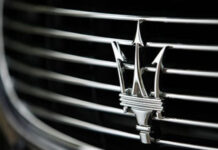Hydrolock is a common problem that occurs when liquid enters the combustion chamber, causing the engine to stall. This is because liquid is not easily compressible like the usual air and fuel mixture. As a result, the piston in the cylinder cannot complete its cycle, leading to the engine shutting down.
So, what causes hydrolock? The most common reason is water entering the engine’s air intake system. Driving on flooded streets can pose a significant risk, especially for vehicles with low air intakes like sedans or hatchbacks. Another possible cause is a damaged or cracked head gasket, also known as a blown head gasket.

Drivers should be cautious and avoid flooded areas whenever possible.
The impact of hydrolock on the engine depends on various factors, such as the engine’s operating condition when water enters. If the engine is running without load (when the vehicle is stationary but the engine is still running), it will shut down when hydrolock happens and is usually unable to restart normally. This is the less harmful scenario for the vehicle.
Unfortunately, if hydrolock occurs at high engine RPM, the consequences can be more severe. Depending on the depth of the water and the positioning of the engine’s air intake, water can enter one or several cylinders. In some cases, if only one cylinder is affected, the vehicle may still be able to run for a short distance due to the power from the remaining cylinders. However, at high speeds, the engine will typically abruptly shut down.
The consequences in such cases are extremely dangerous. The water prevents the piston from moving along the cylinder, but it still withstands the force from the camshaft, causing the connecting rod to bend and damaging the bearings and crankshaft. In severe cases, the engine block may even crack, requiring a complete engine replacement. The repair cost in these situations is significant, and even if the engine does not need to be replaced, there is always a risk of rusting in the cylinders and engine components, which can affect the vehicle’s stability. Additionally, water can also damage electrical parts.
Therefore, drivers should be proactive and alert when driving, avoiding flooded areas whenever possible. For regular family vehicles, a water height of 20-25cm can usually be overcome safely. In unavoidable situations where water must be crossed, it is important to maintain a calm mindset, apply gentle acceleration in first gear, avoid sudden throttle increases, and use the clutch (for manual transmission vehicles).
It is crucial to be vigilant and immediately turn off the engine if any abnormalities are detected, in order to minimize the amount of water entering the engine. Do not attempt to start the engine again unless all water has been expelled from the combustion chamber by removing spark plugs and fuel injectors. In “gentle” cases, water leaking out of the cylinders can usually be observed, and then the vehicle can resume normal operation. If uncertain about the vehicle’s condition, it is best to find a way to push the vehicle to a higher and dryer location and call for roadside assistance to handle the situation, avoiding further damage to other engine components caused by water.











































![[Review] Honda HR-V G: Virtually flawless](https://vnauto.net/wp-content/uploads/2023/11/Xehay-HondaHRVG-19102023-15-100x70.jpg)